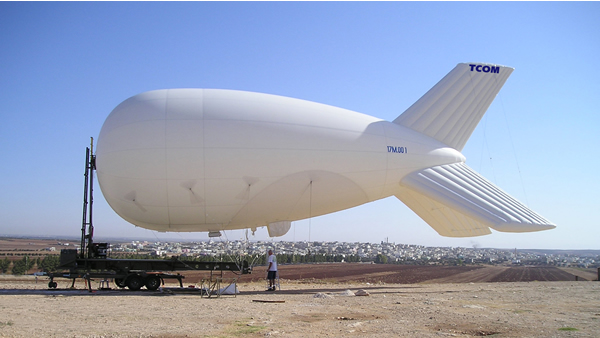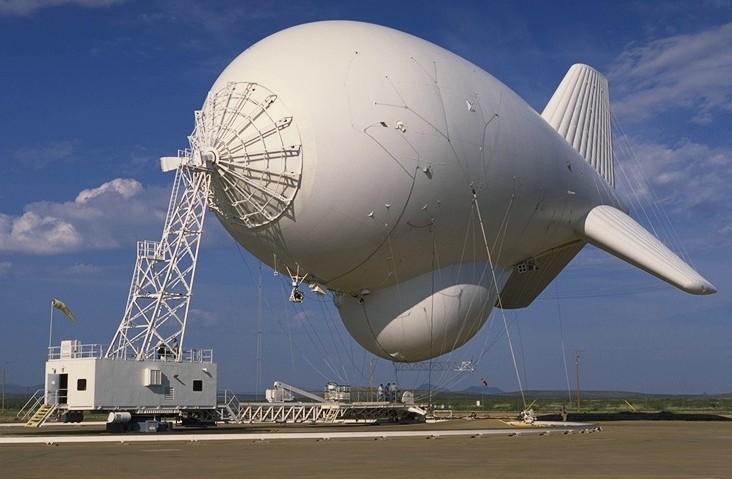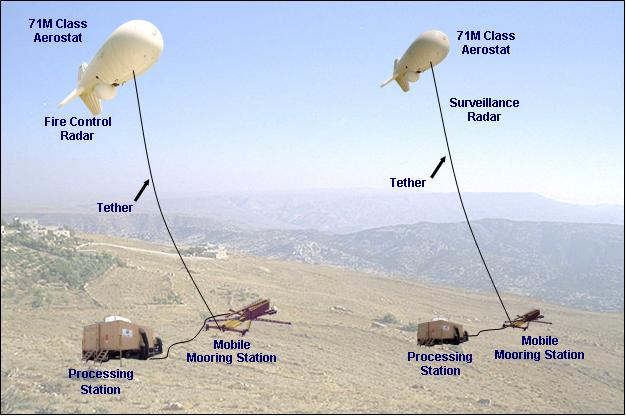|
Lighter Than Air Craft |
|
|
.. © 2004-2010 Defense Industry Daily, LLC
L-3 WESCAM wins electro-optics slot. (Sept 2/10) The rise of modern terrorism, sharply increasing costs to recruit and equip professional soldiers, and issues of energy security, are forcing 2 imperatives on modern armies. Modern militaries need to be able to watch wide areas for very long periods of time. Not just minutes, or even hours any more, but days if necessary. The second imperative, beyond the need for that persistent, unblinking stare up high in the air, is the need to field aerial platforms whose operating costs won’t bankrupt the budget. These pressures are forcing an eventual convergence toward very long endurance, low operating cost platforms. Many are lighter-than-air vehicles or hybrid airships, whose technologies have advanced to make them safe and militarily useful again. On the ground near military bases, Raytheon’s RAID program fielded aerostats, and then surveillance towers. Lockheed Martin has also fielded tethered aerostats: TARS along the USA’s southern border, and PTDS aerostats on the front lines. The same trend can be observed in places like Thailand and in Israel; and Israeli experience has led to export orders in Mexico and India. At a higher technical level, Raytheon’s large JLENS aerostats are set to play a major role in American aerial awareness and cruise missile defense, and its ground and air scanning ISIS radar was developed under a DARPA project, to pair with Lockheed Martin’s fully mobile High Altitude Airship. The Army’s LEMV project fits in between RAID and HAA/ISIS, in order to give that service mobile, affordable, very long term surveillance in uncontested airspace. Its technologies may also wind up playing a role in other projects…
|
|
The LEMV isn’t really a blimp. Technically, it’s something called a hybrid airship, which gains lift from 3 different sources. One is the same aerostatic lift that a blimp gets, from the same onboard helium. Another is aerodynamic lift, now that composite materials allow rigid, shaped hull designs that aren’t just balloons. The final element is vectored thrust from 4 diesel engines and vector vanes, which builds on aerodynamic lift.
Northrop Grumman Director of Airship Programs Alan Metzger told The Engineer magazine that he expects LEMV to have about 3 weeks endurance, carry 2500 pounds of payload, and travel at speeds between 30 – 80 knots/ He added that: “When you do the maths on that you’re talking about $20,000 to keep the vehicle in the air for three weeks. It’s vastly cheaper to operate than many conventional aircraft today…. Some of the characteristics of our vehicle allow you to make trades between how long you’d like to stay in the air and how much cargo you’d like to carry. We have the ability to trade 23 days to go 1000 miles and carry 15, 20, 30,000 pounds…. We’re green, we use a quarter of the fuel as the same payload of cargo aircraft… there are fewer moving parts. there’s less maintenance…. Now we have the opportunity to show that a vehicle of this class and size can carry the required payloads, create the endurance and persistent surveillance that war-fighters are looking for.” Fortunately, these 3 week missions won’t require a crew, but deploying to the mission zone at home or abroad means flight through civil airspace. For now, that means manned flight options, in addition to remote piloting or autonomous modes. Piloting it has been described as being closer to operating a ship than to flying a plane, and winds above 23 mph or so will be a challenge for the design team to tackle. Their team crosses the Atlantic, and includes Northrop Grumman as lead, plus:
|
|
|
..
There are already many ways to perform aerial surveillance.
Fighter aircraft can and do equip advanced surveillance and targeting pods.
In Iraq, they often found themselves used in overwatch roles for short
periods of time, and piled up a considerable number of flight hours doing
these “non-traditional missions.” At $10-20 thousand dollars per hour operating
cost, however, plus an additional $10 thousand or so per flight hour in
recapitalization costs, fighters are not an affordable option.
Scout helicopters are more affordable, and can intervene like fighters if weapons are needed, but they are noisy and vulnerable, have very low endurance, and are still not cheap to operate. UAVs can offer much lower operating and recapitalization costs than fighters or scout helicopters, and larger models are able to stay on station for 20-36 hours. That’s still a limited period of time, however, and their payloads are likewise limited by weight and aerodynamic restrictions. Those limitations have also traditionally meant limited fields of view, though heavy UAVs like the MQ-9 Reaper are beginning to field products like ARGUS-IS and Gorgon Stare to expand their view. At present, UAVs also crash much more often than manned aircraft. |
|
Manned propeller planes are a useful intermediate option
between fighters and UAVs, with more carrying capacity, a much wider human
field of view, and much better endurance and operating costs than fighters
or helicopters. Iraq has used, and even armed, Cessna 208B Caravans for
this role. HawkerBeechcraft’s MC-12 King Air twin-turboprops are quietly
becoming stars of the Iraq and Afghan wars.
Integrating these 4 options with precision artillery fire, via organizational structures like the USA’s Project ODIN, has paid big dividends on the front lines. So where do hybrid airships fit in? The answer is tied to what they do best. They can operate from any small forward base, like a helicopter. Their operating cost is likely to be better than any other surveillance option, and so is their endurance, which can be measured in weeks. Modern airships have long since stopped using hydrogen, and the growth of composite structures gives them very interesting design options they’ve never had before. Unlike aerostats, they will be mobile rather than fixed. Speed will be less than any aircraft or even UAV option, however, so airships will perform best covering specific high-value areas, or assigned stations. In that role, they can serve as steady communications relays, for instance, ensuring the groups of soldiers in mountainous areas never lose contact with one another, even if they don’t have direct line of sight to each other. They can track important convoys, key roadways, or other key infrastructure as semi-permanent overwatch escorts, monitor an urban area of interest to prep for major battles or enforce security, or focus on shutting down border chokepoints. By restricting its focus to very achievable goals, the US Army will be funding a system whose sensors and surveillance equipment go well beyond RAID’s proven gear, without being anywhere near the bleeding edge of technology like HAA/ISIS. Within the Army, it will provide a level of overwatch that goes well beyond its top-end MQ-1C SkyWarrior UAVs, offering heavy surveillance payload options like the USAF’s MQ-9 Reaper, but with much longer endurance. Finally, the Army’s move will fund operational hybrid airships, proving out the concept, and growing the industrial base for obvious future LTA projects like cargo lift. |
|
|
..
Sept 2/10: L-3 WESCAM announces
an order from Quantum Research International Inc., at the direction of
US Army G2, to supply the LEMV’s electro-optical surveillance and targeting
sensors: 2 MX-15HDi
and 2 MX-20D
turrets per LEMV.
These turrets are dual-mode, offering rangefinding and targeting on top of their surveillance functions. Each turret will be fully equipped with 1080 pixel imaging cameras, and will have multiple HD feeds streaming from the cameras within each turret. They are also equipped with L-3 WESCAM’s Enhanced Local Area Processing (ELAP) to improve clarity, increase their effective range, and improves feature detection & recognition. Deliveries of the initial set of 4 will begin in late 2010, and be complete by January 2011. June 14/10: Northrop Grumman announces a $517 million contract to develop up to 3 LEMV (long-endurance multi-intelligence vehicle) hybrid airships for the US Army Space and Missile Defense Command/Army Forces Strategic Command. The 3 LEMVs will be designed, developed and test with their surveillance payloads within an aggressive 18-month time frame, then transported to the front lines for assessment and use by the military. The LEMVs are not small airships, and are described as “just larger than the length of a football field” (about 100m). per the solicitation, they’ll have to sustain altitudes of 20,000 feet for a 3-week period, while carrying up to 2,500 pounds of sensors and communications equipment. Northrop Grumman designed their system to integrate into the Army’s existing common ground station command centers, and equipment used by ground troops in forward operating bases. See also: WIRED Danger Room. Feb 11/10: U.S. Army Space and Missile Defense Command issues solicitation #W91260-10-R-0005 for a “Long Endurance Multi-Intelligence Vehicle.” The solicitation is amended several times, but its core is issued under Section 845 of the National Defense Authorization Act (NDAA) for Fiscal Year (FY) 1994, Public Law 103-160, as amended (Title 10 United States Code (USC) Section 2371). That long citation exempts the purchase from many US federal acquisition regulations and processes, with the intent of fostering the participation of companies that do not traditionally do business with the Department of Defense. “The anticipated LEMV OTA will be for a (5) year technology demonstration inclusive of the fabrication of a LEMV airship, integration of payload and ancillary systems, test, and support for (5) years. The schedule requires performance testing within 18 months followed by additional test and demonstration conducted in Afghanistan over the remaining OTA term. The basic performance requirements for the LEMV airship include: optionally unmanned; 3 week endurance; 2500 pound payload capability; operating altitude of 20,000 feet above mean sea level, 16 kilowatts of payload power; multi-intelligence capable; supportable from austere locations; 80 knot dash speed and 20 knot station keep speed.” SkyCat takeoff
Space and Missile Defense Command will reportedly issue an RFP on Jan 29/10 (actual date: Feb 11/10), and an acquisition notice posted on Dec 29/09 asks for an “optionally manned” craft that can fly for up to 3 weeks, carry multiple intelligence payloads weighing up to 2,500 pounds/ 1,134 kg, provide 16kW onboard power, and reach speeds up to 80 knots/ 148km/h. |
|
Additional Readings and Resources
|
|
|
Small Systems, Big Surveillance Time ..
The RAID program is a combination of cameras and surveillance equipment positioned on high towers and aerostats, in order to monitor a wide area around important locations and bases. Aerostats differ from blimps in that blimps are powered, while aerostats are anchored to the ground via a cranked tether that also supplies electrical power. Because the aerostats are not highly pressurized, bullets won’t burst them and they can actually remain buoyant for hours after suffering multiple punctures. The RAID concept began with a smaller TCOM 17M aerostat as the base platform, instead of the TCOM 71M JLENS aerostats used for cruise missile and air defense. Its sensors were also optimized for battlefield surveillance, rather than JLENS’ focus on powerful air defense radars. The result is a form of survivable and permanent surveillance over key areas that has been deployed to Afghanistan & Iraq. “Aerostats” has actually become something of a misnomer, however – RAID can also be deployed as a tower system, and this “Eagle Eye/ GBOSS” deployment is turning out to be the preferred mode. Raytheon continues to receive contracts from the US Marine Corps and US Army for new towers, as well as maintenance of existing systems. FLIR Systems is another prominent RAID contractor, who has just received another order… SOURCE: The
USA’s RAID Program: Small Systems, Big Surveillance Time
|
|
|
..
ITT Systems Division of Colorado Springs, CO received a $33.7 million fixed-price, cost-plus award fee with cost reimbursable line items contract for the Tethered Aerostat Radar System (TARS). ITT will operate, maintain, and support 8 operational TARS sites 24 hours a day/ 7 days per week, and also provide cradle-to-grave support for the entire TARS network. At this time $1.5 million has been obligated. ACC AMIC/PKC in Newport News, VA manages this contract (FA4890-08-C-0005). An aerostat is a lighter-than-air craft that relies on a ground tether for movement and often for power as well, as opposed to blimps which are self-powered, free-flying craft. The US military has slowly come around to the benefits of aerostats in an era that requires persistent surveillance, but features high fuel prices. The RAID program has morphed into the tower-centric GBOSS, and progress on the naval front remains low, but the $1+ billion JLENS advanced aerial surveillance program is still moving ahead, and Lockheed Martin has delivered its PTDS aerostats to the front lines for ground surveillance duties. Now ITT’s TARS can be added to the mix… TARS itself is a counter-drug program funded by the Deputy Assistant Secretary of Defense for Counter Narcotics, Counter Proliferation, and Global Threats. It uses 2 sizes of helium-filled aerostat made by TCOM or ILC Dover: one is 275,000 cubic feet in size, while larger aerostats are 420,000 cubic feet. ITT Systems Division is the support integrator, and the bulge in the above photo houses a Lockheed Martin L-88 radar. It’s designed to filter out ground clutter and detect “low-level targets” in the United States, especially along the traditional drug-runner flight paths along the Mexican border, the Florida Straits, and the southwest Puerto Rico/ Caribbean regions. Both USNORTHCOM and USSOUTHCOM both undertake Counterdrug/ Counter-Narco Terrorism (CD/CNT) missions in these sectors, even using E-2 Hawkeye AWACS aircraft in the course of their duties. TARS will not replace other methods, but it will supplement them with an around-the-clock component. As a bonus, a radar with these detection capabilities can also notice items like low-flying cruise missiles, and so TARS is also explicitly tasked with contributing to NORAD’s air defense mission. ILC Dover is a Lockheed Martin STAR supplier, and TARS overall is touted as a Lockheed product. In 2000, Lockheed Martin Naval Electronics & Surveillance Systems-Akron won a USAF contract to upgrade 6 Tethered Aerostat Radar System sites. Note: The aerostat TARS systems should not be confused with BAE’s TARS reconnaissance pod, which also performs surveillance but does so attached to a fighter jet. |
|
|
..
Testing in Utah; facilities in Texas; GAO program report. (April 14/10) Experiences in Operation Iraqi Freedom showed that even conventional cruise missiles could have important tactical uses in the hands of a determined enemy. Meanwhile, the proliferation of cruise missiles and associated components, combined with a falling technology curve for biological, chemical, or even nuclear agents, is creating longer-term hazards on a whole new scale. Intelligence agencies and analysts believe that the threat of U.S. cities coming under cruise missile attack from ships off the coast is real, sophisticated and evolving. Aerial sensors are the best defense against low-flying cruise missiles, because they offer far better detection and tracking range than ground-based systems. The bad news is that keeping planes in the air all the time is very expensive, and so are the aircraft themselves. As cruise missile defense becomes a more prominent political issue, the primary challenge becomes the development of a reliable, affordable, long-flying, look-down platform. One that can detect, track and identify incoming missiles, then support over-the-horizon engagements in a timely manner. Hence the Joint Land Attack Cruise Missile Defense Elevated Netted Sensor (JLENS).
|
|
| FAIR USE NOTICE: This page contains copyrighted material the use of which has not been specifically authorized by the copyright owner. Pegasus Research Consortium distributes this material without profit to those who have expressed a prior interest in receiving the included information for research and educational purposes. We believe this constitutes a fair use of any such copyrighted material as provided for in 17 U.S.C § 107. If you wish to use copyrighted material from this site for purposes of your own that go beyond fair use, you must obtain permission from the copyright owner. | |
|
|
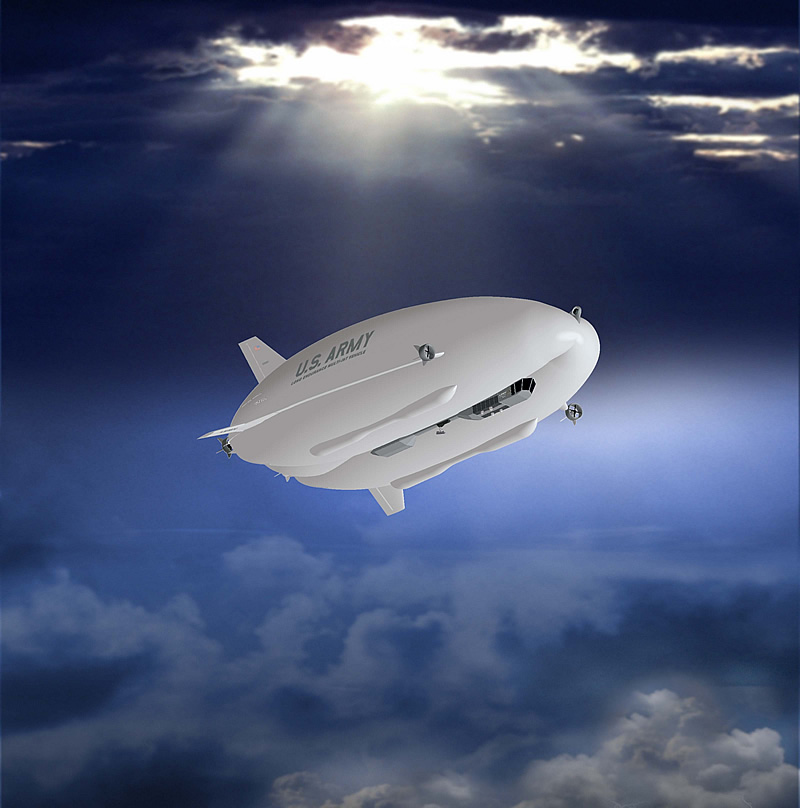
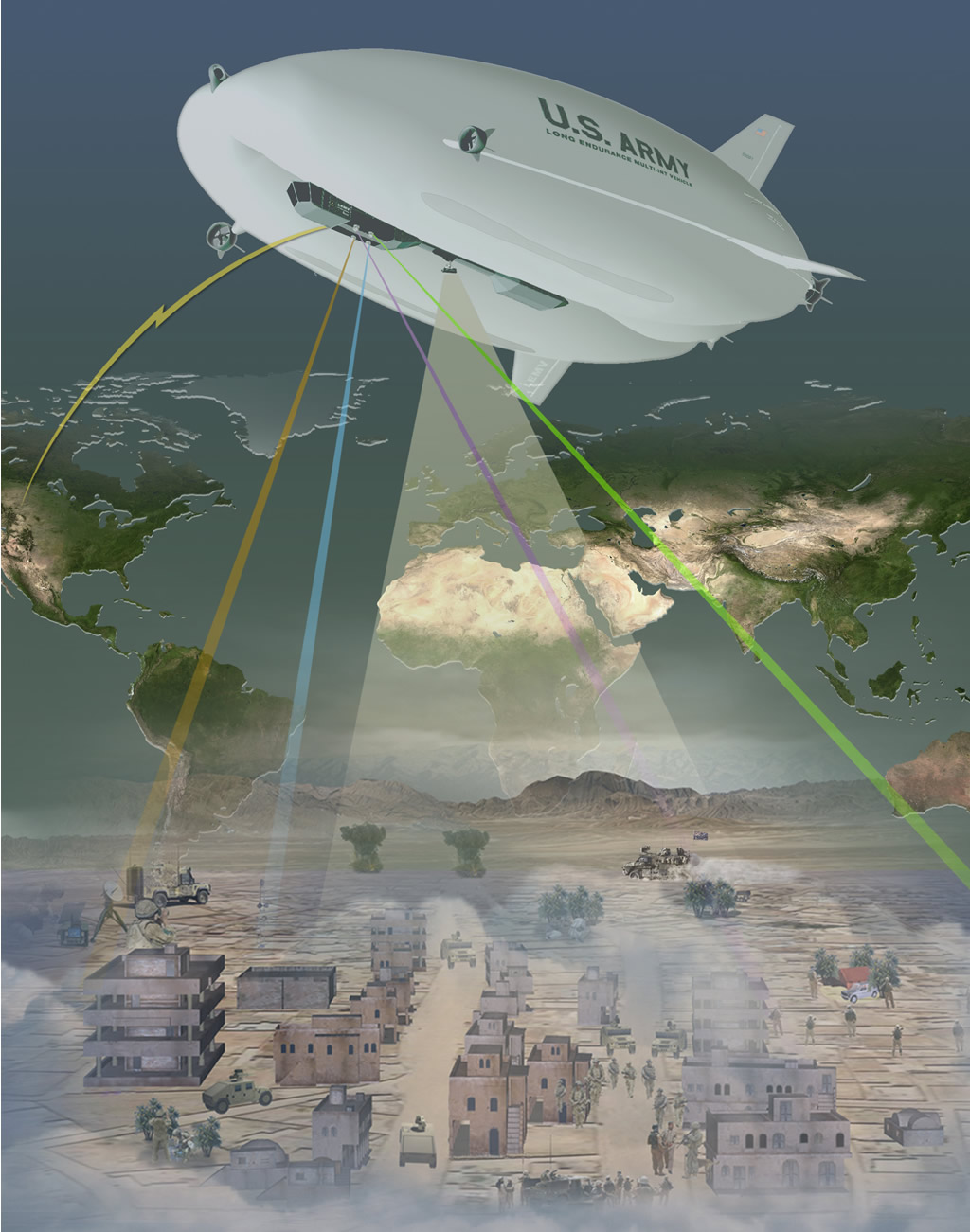
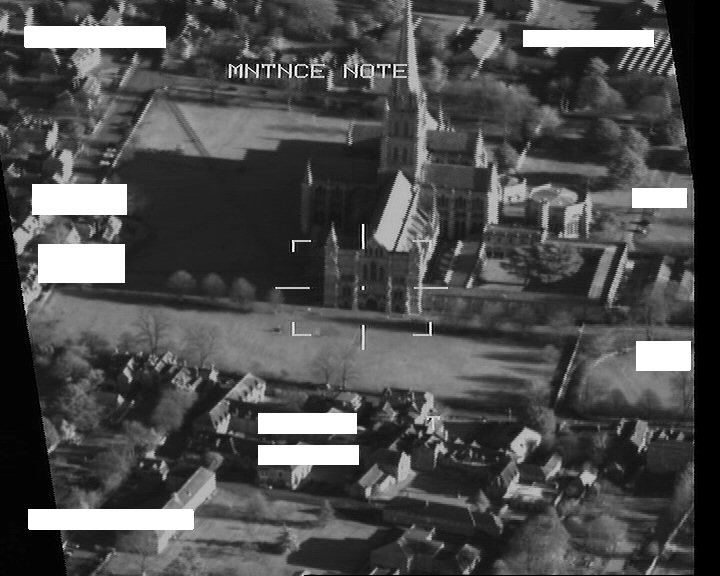
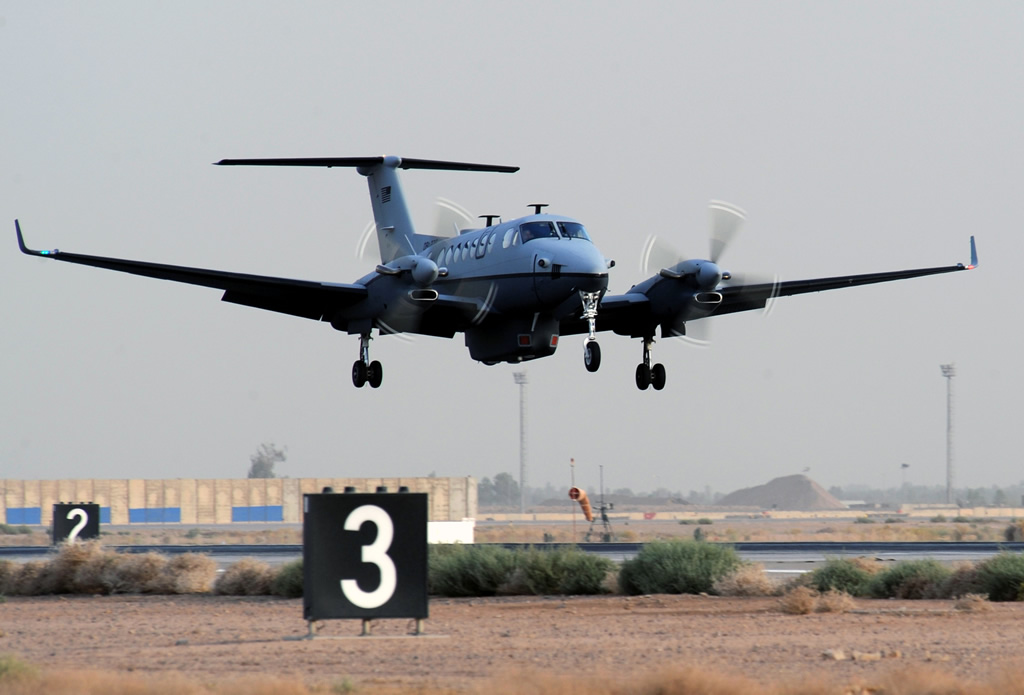
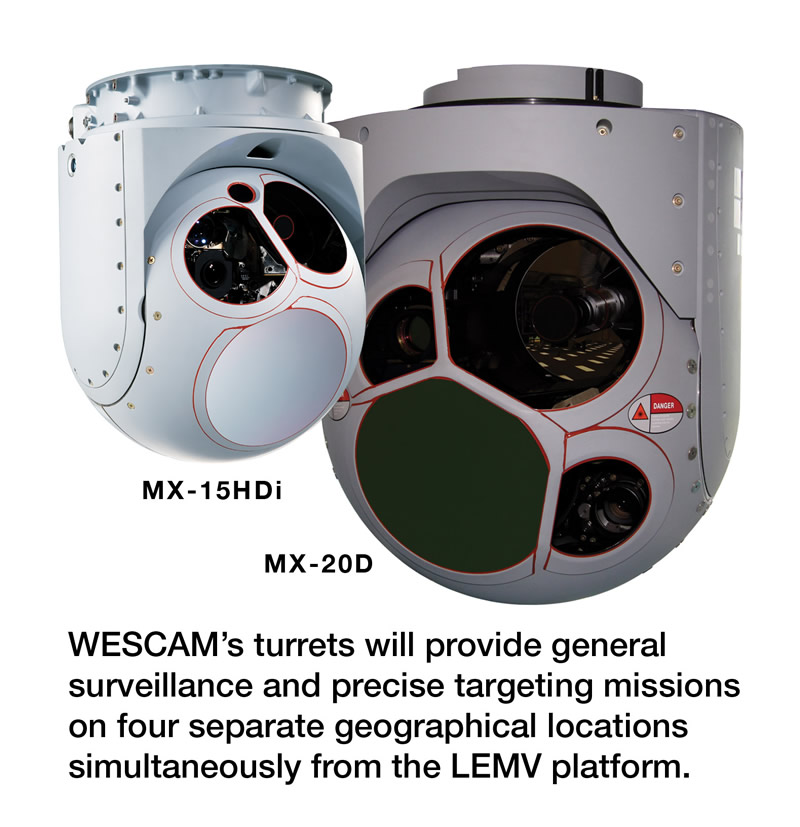
 Dec
30/09:
Dec
30/09: 